1980 Porsche 911 Reviews
You'll find all our 1980 Porsche 911 reviews right here. 1980 Porsche 911 prices range from for the 911 to for the 911 Sc.
Our reviews offer detailed analysis of the 's features, design, practicality, fuel consumption, engine and transmission, safety, ownership and what it's like to drive.
The most recent reviews sit up the top of the page, but if you're looking for an older model year or shopping for a used car, scroll down to find Porsche dating back as far as 1964.
Or, if you just want to read the latest news about the Porsche 911, you'll find it all here.
Porsche 911 Reviews
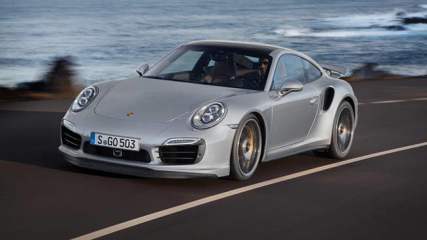
Porsche 911 Turbo and Turbo S 2014 review
Read the article
By Craig Duff · 21 Mar 2014
It makes us look good - but so it should, at $359,800.

Mega supercar drag race video
Read the article
By Mat Watson · 04 Mar 2014
When Mercedes invited us to the Race the Runway charity event at Edinburgh Airport, we lept at the chance.

Porsche 911 Turbo S vs Nissan GT-R 2014 review
Read the article
By Owen Mildenhall · 07 Jan 2014
Ever since the first one was introduced in 1974, the 911 Turbo has been the point of which Porsche's most famous sports car morphs into a supercar.
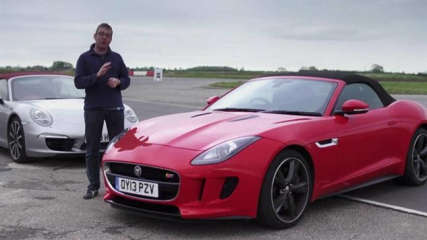
Porsche 911 vs Jaguar F-Type 2013 Review
Read the article
By Staff Writers · 20 Sep 2013
You've probably seen and heard a lot about the new Jaguar F-Type but how would it compare on a track battle against arguably the most capable convertible sports car money can buy?
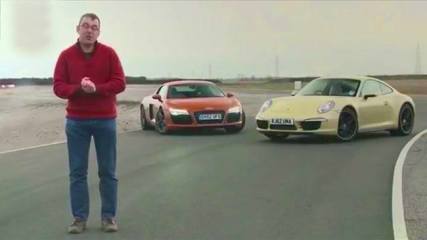
Audi R8 vs Porsche 911 Carrera 4S 2013 review
Read the article
By Owen Mildenhall · 09 Sep 2013
How quick is the new Audi R8 4.2?
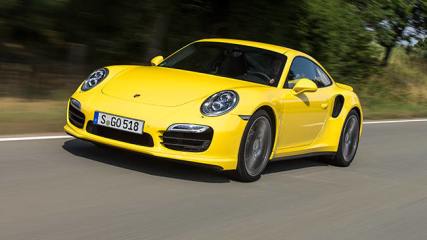
Porsche 911 Turbo 2013 review
Read the article
By Joshua Dowling · 27 Aug 2013
There are Porsches -- and then there is the Porsche 911 Turbo, the pinnacle of the performance-car maker’s line-up. With a drive-away price of close to $500,000 for one with all the trimmings you could be forgiven for scoffing at such an automotive indulgence from such a tall poppy.It’s one of the best cars I’ve ever driven, the best of its breed and I’m genuinely sad that I will never be able to afford one. It quite simply is an epic car -- and deserving of all its hype and glory.

Porsche 911 Turbo 2013 review
Read the article
By Joshua Dowling · 26 Aug 2013
There are Porsches -- and then there is the Porsche 911 Turbo, the pinnacle of the performance-car maker’s line-up. With a drive-away price of close to $500,000 for one with all the trimmings you could be forgiven for scoffing at such an automotive indulgence from such a tall poppy.But the 911 Turbo genuinely is one of a few cars in the world that epitomise how far the automobile has come in 125 years. The “haves” respect it, the “have nots” wonder why such a vehicle exists -- and query who would spend that much on a car when you could buy a house.It might be hard to believe but cars with this level of automotive excess tend to spawn technologies that eventually filter down into more affordable models. Car-makers can take a punt with new technology because the development cost, in effect, gets under-written by wealthy buyers.The new 911 Turbo, for example, has a couple of fuel-miser tricks not yet seen on other cars (see technology) even though it’s at its best when using fuel at a greater rate than most other cars on the road.But there is one other important aspect of the 911 Turbo that might even take some of the hate out of the haters. It’s a silent -- if a little conspicuous -- contributor to the public coffers. About $150,000 from each one of these Porsches is diverted to the Federal Government in the form of Luxury Car Tax and import duties. So when Porsche has a good year and sells 120 or so 911 Turbos, it’s pumping more than $18 million annually into schools, hospitals, aged care and or saving whales. Hey, I tried.In this league value genuinely is a relative term. If the $359,800 starting price of the 911 Turbo isn’t enough to give you an ice-cream headache (not only because of the lack of rounding in this stratosphere, but the stratosphere itself) then consider this.The 911 Turbo S costs $81,500 more ($441,300) than the regular model and yet is only 0.1 second quicker from 0 to 100km/h (3.1 versus 3.2 seconds for the record). It’s the most expensive one-tenth of a second in the car business.That price premium also buys carbon ceramic brakes (typically a $20,000 option), racing-style single-nut wheels, LED headlights and a more liberated engine (it revs higher and makes more power).If you want the wind to blow in your hair (or over your scalp) a convertible is available in Turbo and Turbo S guise for a $29,000 price premium over the equivalent coupe. And before you know it you’ve wound up with a half-a-million-dollar mid-life crisis.The price wouldn’t be such an issue if not for our gouging government and one small but symbolic sin of omission from Porsche. Inexplicably, a rear-view camera is an optional extra on all 911 Turbos. And yet they’re standard on a $23,990 Hyundai hot hatch. Seriously, how could a company full of so many smart people who make such a fantastic car make such an oversight?Not many cars automatically cut the engine in stop-start traffic to save fuel and also have launch control to burn fuel as fast as scientifically possible. But that’s the case with the new 911 Turbo.Press a button, put your left foot on the brake, floor the accelerator and then watch all hell break lose as you step off the brake and on to what feels like a landmine. Actually make that an anti-tank missile. By jingoes does this thing go like the proverbial slingshot. And by jingoes I said something a lot more colourful than by jingoes when it actually happened.Fortunately we got to test it again and again and again. It was like being at the start of rollercoaster ride -- but one in which you’re allowed to keep going until you get giddy. The thing is, though, I didn’t get giddy and the cars kept copping the punishment.It’s a stark contrast to the launch control system on some other performance brands. BMW and Ferrari, for example, have in the past either rationed how many launch starts you’re allowed to try or just flat out disallow it. BMW M5s have ended up on tow trucks, Ferrari minders have discouraged journalists from experimenting with launch control because “it’s hard on the car”. That it is. But the Porsche seems to be able to handle it.Porsche isn’t just clever with technology that makes its cars fast, it has also come up with some ingenious ways to save fuel when the 911 Turbo’s not being driven flat out. The engine deliberately cuts out once you slow down to 7km/h. Below 65km/h it will deliberately slip the clutch on the automated PDK gearbox to create the most economical way to deliver power when driven gently.The back wheels are discreetly angled inwards (up to 2.8 degrees) in tight turns at speeds below 50km/h. This also cuts the turning circle by 0.6m to 10.6m, says Porsche. Above 80km/h the back wheels are discreetly angled in the same direction of travel to improve high speed cornering and lane-changing. It’s fair to say it’s difficult to detect. But a feeling of sure-footedness is apparent.Most modern cars are designed to slip through the air easily but given that the 911 Turbo has a top speed in excess of 300km/h -- and planes take off at 250km/h -- Porsche has had to get better at finding ways to keep it on terra firma. To that end Porsche has come up with a front spoiler and a rear wing that poke out from the bodywork at the press of a button. It also means the front end won’t scrape on steep driveways because the rubber “chin” can retract.For the technically minded the new Porsche 911 Turbo in standard mode has a coefficient of drag rating of 0.31Cd, and in performance mode 0.34Cd. In layman’s terms when all the 911 Turbo’s aerodynamic aids are deployed it pushes more air out of the way than a Holden Commodore (despite having a fraction of the big sedan’s surface area to cut through the air).To save you doing a web search, the new Holden Commodore’s aero rating is 0.30Cd. By comparison a Toyota Prius is 0.25Cd -- but the best mass-production car in the world is the new baby Benz sedan, the CLA, which has a rating of 0.22Cd.Central to the success of the new 911 Turbo, however, is its epic engine. The twin-turbo horizontal six-cylinder engine has 383kW in the standard model and 412kW in the Turbo S. But power is nothing without torque and to that end the new Porsche 911 Turbo has had a generous serve.On second thoughts, it’s been downright greedy. The standard car has 660Nm (that’s more than a HSV V8) but that reaches a peak of 710Nm in performance mode. The Turbo S has a 700Nm helping of torque in standard mode -- unleashing 750Nm at the press of a button and a 20-second flooring of the throttle. How does all this power behave in such a light and nimble package? Stay with us.The formula for creating a 911 Turbo is a familiar one: start with a standard 911 and then make it wider, lower and slightly longer, giving it a bigger footprint. Various weight saving measures mean the new 911 Turbo is almost the same weight as before (1595kg to 1605kg, depending on the model) despite being loaded with extra technology.Six airbags, ample grip and enough acceleration to make sure you’re safely back on the correct side of the road after overtaking in as short a time as possible.I’ve never before accelerated so quickly in a car that the glovebox popped open. But that is just how much G-force is going through the new 911 Turbo on take-off. Be assured that the Germans know how to make gloveboxes to the same standards as the rest of the car, and possibly the world’s best. But it’s fair to say Porsche may need to fit a stronger latch to the glovebox lid on the new 911 Turbo. Or supply a lighter owner’s manual.Other manufacturers may talk up the hype but few deliver it as convincingly as Porsche. The straight-line acceleration of the new 911 Turbo is the closest mere mortals will ever get to experiencing the sheer brutal energy of a top level dragster, a high-powered motorcycle, or Felix Baumgartner’s fall to earth from the edge of space.And yet, of course, a Porsche is never only about straight-line speed. The 911 Turbo has new levels of agility attributed to the automatically adjustable suspension, new tyre technology and the extra aerodynamic downforce which, incidentally, Porsche claims trimmed 2 seconds from its Nurburgring lap time to 7 minutes and 27 seconds on Pirelli P Zero tyres (7 minutes 24 seconds on Dunlop semi-slick road-legal racing tyres).It’s little wonder the extra grip is there, with wider tyres front and rear than ever before. For the enthusiasts who’ve read this far the 911 Turbo’s front wheels are 8.5-inches wide and the rears are 11-inches. The Turbo S goes wider again (9-inches and 11.5-inches respectively) but the tyres are the same size on both models (front 245/35ZR20, rear 305/30ZR20).The brakes are equally impressive. The standard 911 Turbo has crossed drilled 380mm discs front and rear while the 911 Turbo S has carbon ceramic discs (410mm front and 390mm rear). Both models come with six-piston calipers up front and four-piston calipers at the rear. On the private race track Porsche hired, a 4km ribbon of road that’s likened to a miniature Nurburgring (with equally scary bumps, sloping corners and blind curves over crests) the 911 Turbo felt frightening and yet strangely comforting.The senses are overloaded by the blurred scenery, the thwack in the back every time you floor the accelerator, and then the chest pains from the seat belt every time you slam the brakes. It’s as violent as you want to make it. And then you realise you should have been picking twigs out of your teeth long ago. The car’s stability control management system can’t control the laws of physics, but it comes damn close. It makes ordinary drivers look like a pro. But when a pro gets behind the wheel, you don’t see which way they went.The new 911 Turbo is so good it’s difficult to write about it without getting accused of being caught under the Porsche spell. But I have panned Porsche in the past for building the Cayenne SUV (the original was terrible, the second-generation model is much better).And I have ridiculed Porsche for introducing diesel engines -- after the company said it would “never” do it (the latest ones are excellent). I even got banned from driving Porsches, for a short while, after we dared to compare the performance of the Porsche Cayenne V6 SUV with a Toyota Tarago V6 people-mover (the Toyota was quicker in a straight line).So my praise for this Porsche does not come lightly. It’s one of the best cars I’ve ever driven, the best of its breed and I’m genuinely sad that I will never be able to afford one. It quite simply is an epic car -- and deserving of all its hype and glory.

Porsche 911 Carrera 2013 Review
Read the article
By Craig Duff · 18 Mar 2013
If you buy a Porsche 911 you want the phat one. That would be all-wheel-drive Carrera 4 models with the rear flanks flared by 22mm a side to house a wider track and 10mm bigger rubber. The C4 and C4S account for 85 per cent of 911 Carrera sales. They’re sexy, swift and - in less than ideal conditions - more surefooted than their rear-drive counterparts.VALUEThe C4 coupe costs $255,400 for a 3.4-litre flat-six engine with 257kW/390Nm matched to a seven-speed manual. The 3.8-litre 294kW/440Nm S model starts at $289,400 for the manual, while the cabriolet C4 and C4S are $280,900 and $315,000 respectively.Only 20 per cent of buyers go for the traditional shifter even though it now rev-matches, or blips, on downshifts in Sports mode. Most stump up another $5950 for the seven-speed dual-clutch transmission.Standard gear across the range includes an auto-deploying rear spoiler, bi-xenon headlamps, a 12-speaker Bose sound system, satnav, cruise control (adaptive is an option) and a seven-inch touchscreen. S models add six-piston front brakes, a rear diff lock and active suspension with a 10mm lower ride height.TECHNOLOGYA digital display of how the torque transfer system is feed front and rear axles now features on the instrument panel. It’d be handy in the real-world but on the newly resurfaced Phillip Island layout, most of the momentum was achieved down back.Until things get way untidy or you’re accelerating off the line, the C4 and C4S have been engineered to behave like rear-drivers. All transmission s include an auto stop/start setting and the dual-clutch auto adds a coasting function. DESIGNThe wide-bodied 911 fuses form and function into one of the most distinctive and desirable shapes in automotive history. The heftier rear is an elongated power bulge reflecting the improved grip that comes from a wider track. The grippy leather seats are classic, pampered Porsche and while there’s a bunch of switches to learn, the important ones are below the shifter. Cabriolet owners can raise or lower the soft-top hood in 13 seconds at speeds up to 50km/h.SAFETYSpending $250,000 to throw a relatively low-volume car at a wall doesn’t appeal to EuroNCAP or ANCAP, so the 911 doesn’t have an official score. What it does have is Swiss-watch steering, the mechanical grip of an octopus and a beefy set of brakes overseeing a smart software suite.DRIVINGThere’s a directness to driving a Porsche that that isn’t hurt by the reassurance there’s all-paw grip to help hang on to the black stuff. It’s a dance on wheels and pedals as driver inputs initiate a chain reaction of changes to the vehicle’s poise and pace. They’re transmitted back through the spot-on electric steering, the seat of the pants and the rising pitch of the tyre whine.It’s an engaging driver’s car, pure and simple, and will continue to obsess designers and drivers alike. Yes there are quicker cars for the price but performance is more than sprint times. The C4S officially hits 100km/h in 4.1 seconds. It doesn’t need to slow down for much beyond hairpin turns after that. The engine was built to rev and it demands track days to see anything close to its potential.VERDICTThe 911 has engineered performance into a pedigree with more repute than most European royalty. This generation of the C4 range upholds that tradition with aplomb. Unlike royalty, it is still entirely relevant to modern life.FACTOIDA skid-pan exercise with the C4 and C4S models had to be abandoned after the all-paw cars found too much traction to slide on the wet concrete, even with the stability management software switched off.Porsche 911 C4, C4SPrice: from $255,400-$315,000Warranty: 3 years/unlimited kmResale: 64 per cent (three years, Glass’s Guide)Service Interval: 12 months/15,000kmEngines: 3.4-litre flat six, 257kW/390Nm; 3.8-litre flat six 294kW/440NmTransmission: 7-speed manual, AWDDimensions: 4.49m (L), 1.85m (W), 1.3m (H)Weight: 1430kg-1515kgSpare: Tyre inflation kitThirst: 9.3L/100km (98 RON), 219g/km CO2 to 10.0L/100km (98RON), 236g/km CO2
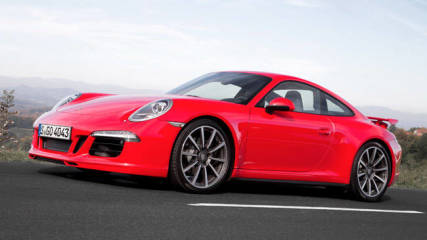
Porsche 911 Carrera 2012 review
Read the article
By Paul Pottinger · 01 Nov 2012
Four wheels good, two wheels ... Well, not "bad". Never bad. Not when they're the rear wheels of a 911. The triumphal and still fairly new 991 generation of the perennial sports car has been launched in its all-wheel-drive versions - Carrera 4, 4S and the equivalent Cabrios. Driven this week in the Austrian Alps, it was never going to be a question of these being better than the solely rear driven 911s.Rather it's down to your definition of "better". Is making the already incredibly adept 911 that bit more clinical and über capable is really such a good idea - especially in a car that is already too good to be used in Austria and leagues of magnitude too good for Australia?When asked what Carrera would do for him, Herr 911 himself - the model's project leader August Achleitner - tells Carsguide: "I would be satisfied with the C2 S. If you do not live among snow, the grip is massive."Indeed he says, when properly shod with Pirelli summer rubber and driven in optimum conditions, the ostensibly lesser 911 provides some 90 per cent of the C4's immense capability. "But," Achleitner says, "you feel better when you hand the keys to your wife." Or the likes of me.VALUEIf measured literally by metal for the money, there's no argument. The extent to which the wide bodied C4s are bigger than the C2s appears incremental on paper, but hugely imposing in physical appearance. More on that in a minute ...In showrooms by March (those that haven't been pre-bought) - the 3.4-litre 911 Carrera 4 Coupe is priced at $255,400 plus on-roads - the price of a VW Up over the previous model. The Carrera 4 Cabriolet is a base Polo dearer than its predecessor at $280,900. At $289,400 the stove hot 3.8-litre Carrera S 4S represents a rise of a Polo with DSG. The range topping $315,000 Carrera Cabriolet is getting into Golf country over the car that preceded it.Yet even without options (but always including the $5400 PDF twin clutch auto) the full panoply of which could equally be a Scirocco S over the previous car, the new Carrera 4s represents at least that great an advance. It's a tech tour de force.Realise also that more than $100,000 of each car's purchase price goes to Wayne Swan, who of course spends it on everyone's behalf, so don't go calling 911 drivers "bankers". They're contributing to the common good.TECHNOLOGYTo extol the Carrera 4's array of tech would not only be superfluous - you've read it all recently - but to risk being cast adrift in an ocean of acronyms. This time, we need discuss only Porsche Traction Management system, the slick electronic mechanism that shares the driving force around all four wheels, distributing power between the permanently driven rear axle and the front. It allows no more torque to be transmitted to the wheels than can be done without slip, reacting quicker than a mere human could hope.It's as active or passive as you yourself are behind the wheel, continuously monitoring including the rotational speed of all four wheels, the lateral and longitudinal acceleration of the car and the steering angle to send drive to where it will do most good. Blast off the mark hard enough to disturb traction and the multi-plate electronic clutch thrusts power aft. To cement the relationship of "proof" with "fool", another program prevents wheel spin by adapting the engine’s power output. During cornering, the optimal level of drive power is distributed to the front wheels to ensure excellent lateral stability.And if not for the event busy dashboard indicator that shows which end is doing how much work, you might never know what's the go. PTM might as well be a short form for "seamless". Or "flattering". Sorry but you alone are just not that good.Present and correct are the two tunes of Porsche's water-cooled flat six, with direct injection, variable valve timing, an aluminium block and every refinement to ensure that in 3.4 or 3.8 form, the C4 911s run barely an eyeblink behind the C2s.The Carrera 4 Coupe does the 0-100kmh run in 4.5 seconds, the Cabriolet in 4.7 - all of one tenth behind the rear wheel drive cars. The blazing S versions match their lighter siblings at 4.1 seconds in the Coupe and 4.3 in the drop top.DESIGNOn paper 44mm of extra width over the regular 911 looks very little. In practice, on narrow alpine roads crusted by frost with vertiginous drops, it feels like an extra metre. If unkind to driver's view (shrouded is too kind a word for the coupe's rear three quarter aspect) visibility is very much the point of the flared rear arches and wider wheels."This is why we have the wide body," Achleitner says. "People wish to show they can afford the most expensive model."Certainly the 911's cockpit no longer leaves you wondering where your quarter of a million bucks went. Indeed, Porsche appears to be over eager to demonstrate it. No less than 60 buttons festoon the centre console and mirror controls.While the wheel is free of these, its column spouts four wands and two gear shifting levers. There's a tonne of function, but form? Not so much.If being the 911's exterior designer is the equivalent to being Tony Abbott's speechwriter - give them more of the same then repeat endlessly - incremental changes become all the more impactful. The widened C4 looks weapons grade.SAFETYNo one's crash tested this and no one's going to. At any rate, the C4 sheer dynamic ability, underwritten by an exceptional array of active and passive electronic measures, means the human factor needs to be especially egregious if all is to end in road toll stats.So clinically, incredibly adept is the C4, I asked Achleitner if perhaps some of the sport had been removed from this classic sports car."To use an example from my own experience, I am a very enthusiastic manual transmission driver. But when you drive PDK, which can manage so wide a breadth of tasks, you can even as a lover of manual transmissions want to change to PDK," he says."All these systems and all-wheel-drive too - at Porsche we ask the question do we need these? They are not essential, but they improve the car. It makes its ability, its limits, higher. And the car never gets boring."DRIVINGCertainly the car - especially the full throated S - never sounds dull. When you've tired of the aural frenzy bought on by even a half enthusiastic throttle opening, you have tired of life.Even with its dynamic edge blunted by winter tyres, it is impossible not to be awestruck by this phenomenally sophisticated device for getting around corners quickly. You cannot reasonably complain about the feelful electric steering.You cannot but be delighted by the throttle blipping down changes of the PDK, transmission so adept, so incredibly intuitive that imposing your own will via manual changes is like pouring salt into an exquisite sauce or improving a Shakespearean tragedy with a happy ending. Your intervention is not only superfluous, but undesirable.Maybe that's a good thing.VERDICTFor when only the very best will do, even if the best is a bit too much.
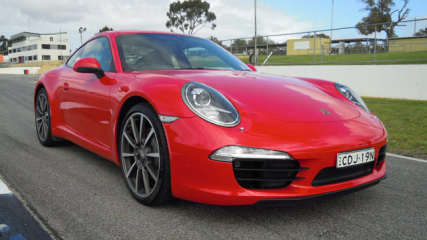
Porsche 911 2013 review
Read the article
By Neil Dowling · 15 Oct 2012
The devil is, as always, in the detail. By parts seen and those microscopic, the Porsche 911 for 2013 is an assembly of parts known and components new.The engine's still at the back - though it has moved slightly towards the front to fractionally reduce rear-weight bias. The shape's the same and few will pick this as a 2012 - coded 991 - over its predecessor. Underneath, however, there's lots of tricky bits. But despite its 1964 origins, it's still a stunning car with the ability not only to go fast, but to turn heads, make women consider marriage and men become your best friend.VALUEYes, it's really expensive. The Porsche Carrera 2 (rear-wheel drive) S (3.8-litre) costs $262,600 as a seven-speed manual. The seven-speed dual-clutch auto option adds a steep $5950. You may want a sunroof ($3890) and heated seats ($1050) and you'll need park sensors ($890). It comes with 20-inch wheels but the Sport Design wheels - to match your steering wheel - will add $890.Ceramic brakes are an extra $19,690 and the Sports Chrono pack - with launch control and centre-dash stopwatch - is $4790 and, to hear that exhaust music, you may need the sports exhaust (with a switch on the dash) for $5890. Want all that? $305,640 please and now add a lot extra to get it on the road.DESIGNParked in the pits at the Wanneroo raceway, it is all 911. In fact, like any 911. That same sad droop of its tail, the signature fenders that sit proud of the bonnet in a tilt of the hat to Ferdinand's first, the teardrop side glass and ancestral overhangs. But it's longer. You notice it in the wheelbase. Where other 911s look short in the leg, like a child who has outgrown his first trousers, this one is stretched.Inside, the knees-up pose needed to swing folded legs past the imposing door post to a deep footwell beyond, is fractionally more generous and more forgiving to women. But it's still not a car commendable for entry and egress. The rear seats are best left folded to lie flat to create a storage areas.The dash has overtones of the Carrera GT and the Panamera with the same rise in the centre console that pushes the gearshifter - in this case the lever for the dual-clutch auto - higher and closer to the steering wheel and with it, the driver's left hand. The switchgear continues to follow Porsche's random placement philosophy and there's virtually no provision for personal items, like the mobile phone, unless the small console or tiny glovebox is considered acceptable.Vision to the front is barely acceptable, to the side it's fair but the tail is invisible. The front and rear park sensors would help, but they're an option - in a $260,000-plus car? - for an extra $890.TECHNOLOGYHoning the engine and transmission and adding stop-start are responsible for a 14 per cent reduction in fuel use - now averaging 9.5 litres/100km - but more importantly, a breathless transition from rest to 100km/h in just 4.3 seconds. There's 294kW at a heady 7400rpm - just 400rpm shy of the red line - and the 440Nm of torque peaking at 5600rpm.The Carrera S with PDK has a pair of rocker switches on the steering wheel to manually change gears. It's a lot clumsier than the simpler, industry-standard paddles with a right-side lever for up, a left lever for downshifting. Luckily, Porsche's "proper'' paddles are a cost-free option but only with the Sport Design steering wheel. Electric-assist steering is new, designed to reduce fuel use and rid the need to have hydraulic hoses fed from the engine pump (at the back) to the steering box at the front.SAFETYNo crash-test rating for this car - indeed, few top-end, low-volume cars are test crashed by independent laboratories - but there's six airbags, electronic stability and traction control, huge four-wheel disc brakes, bi-xenon lights, heated mirrors, rear window wiper but no spare wheel.DRIVINGIt will start with almost the same note as in the past. A stumble at the turn of the key and then a blat followed by a slightly uncomfortable gargle of metal rolling and sliding on metal. Porsche's dual-clutch PDK transmission hides seven cogs and the ability to slip up and down the ratios in less time it takes to blink, so the go-factor is enhanced while the lack of any pause between the gears avoids fuel wastage.The relatively small-bore engine and the lack of a turbocharger give a false indication of the explosive power of this engine. But maximum power at 7400rpm show that it's a screamer. On a deserted Wanneroo Raceway, it only takes a stab at the accelerator at 4000rpm to instantly awaken an angry and noisy reaction to cold high-octane petrol meeting white-hot metal. Jab the gearshift forward for the upchange and there's that push on the chest and barely any restraint to the anger.It handles better than before but we're coming off a high base here. Porsche's adaptive dampers and torque vectoring are now standard after being an option previously. Significantly, fears that the electric-assist steering - a first for the rear-engined car - would kill one of the very factors that makes the 911 so sweet to drive, are extinguished within a lap of the Wanneroo circuit.The steering wheel still relays a sense that your fingers are feeling the coarseness of the bitumen, feeling the camber and touching the ro ad's imperfections. Those who say the electric assist is not as good as the old hydraulic must have a better finger than me.VERDICTThe 911 will tick and crackle while cooling down but for me, it's not a car you can switch off without leaving flushed, charged with adrenaline and itching for another ride. It's more than a car.




